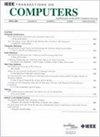基于 SDN 中端口和流量状态的低速率 DoS 攻击缓解方案
IF 3.6
2区 计算机科学
Q2 COMPUTER SCIENCE, HARDWARE & ARCHITECTURE
引用次数: 0
摘要
低速率拒绝服务(DoS)攻击会严重损害网络的可用性,并且由于其隐蔽地利用拥塞控制机制中的缺陷而难以检测和缓解。软件定义网络(SDN)是一种革命性的体系结构,它将网络控制与数据包转发分离开来,是防御低速率DoS攻击的一种很有前途的解决方案。本文提出了一种基于SDN中端口和流量状态的低速率DoS攻击缓解方案Trident。具体来说,我们设计了一个多步骤策略来监控开关状态。首先,Trident通过端口状态检测识别疑似遭受低速率DoS攻击的交换机。然后监控端口状态异常的交换机的流量状态。一旦交换机被识别为遭受攻击,Trident就会分析流量信息,以查明恶意流量。最后,Trident向交换机的流表发布规则,阻断恶意流量,有效减轻攻击。我们在Mininet平台上对Trident进行了原型设计,并使用现实世界的拓扑进行了实验,以评估其性能。实验表明,Trident能够准确、稳健地检测低速率的DoS攻击,快速响应以缓解攻击,并保持较低的开销。本文章由计算机程序翻译,如有差异,请以英文原文为准。
A Low-Rate DoS Attack Mitigation Scheme Based on Port and Traffic State in SDN
Low-rate Denial of Service (DoS) attacks can significantly compromise network availability and are difficult to detect and mitigate due to their stealthy exploitation of flaws in congestion control mechanisms. Software-Defined Networking (SDN) is a revolutionary architecture that decouples network control from packet forwarding, emerging as a promising solution for defending against low-rate DoS attacks. In this paper, we propose Trident, a low-rate DoS attack mitigation scheme based on port and traffic state in SDN. Specifically, we design a multi-step strategy to monitor switch states. First, Trident identifies switches suspected of suffering from low-rate DoS attacks through port state detection. Then, it monitors the traffic state of switches with abnormal port states. Once a switch is identified as suffering from an attack, Trident analyzes the flow information to pinpoint the malicious flow. Finally, Trident issues rules to the switch's flow table to block the malicious flow, effectively mitigating the attack. We prototype Trident on the Mininet platform and conduct experiments using a real-world topology to evaluate its performance. The experiments show that Trident can accurately and robustly detect low-rate DoS attacks, respond quickly to mitigate them, and maintain low overhead.
求助全文
通过发布文献求助,成功后即可免费获取论文全文。
去求助
来源期刊

IEEE Transactions on Computers
工程技术-工程:电子与电气
CiteScore
6.60
自引率
5.40%
发文量
199
审稿时长
6.0 months
期刊介绍:
The IEEE Transactions on Computers is a monthly publication with a wide distribution to researchers, developers, technical managers, and educators in the computer field. It publishes papers on research in areas of current interest to the readers. These areas include, but are not limited to, the following: a) computer organizations and architectures; b) operating systems, software systems, and communication protocols; c) real-time systems and embedded systems; d) digital devices, computer components, and interconnection networks; e) specification, design, prototyping, and testing methods and tools; f) performance, fault tolerance, reliability, security, and testability; g) case studies and experimental and theoretical evaluations; and h) new and important applications and trends.
 求助内容:
求助内容: 应助结果提醒方式:
应助结果提醒方式:


